All too often modern watercraft sponsons are described in terms best categorized as either blades or wings; and while key attributes are certainly appropriate to these two monikers, there is a great deal of science to be considered when designing a sponson – which is what we’ll be discussing in this essay.
This, like several other articles we have published before (here, here and here), is part of a succession of atypical in-depth feature entries aimed to provide the enthusiast audience a firmer understanding of the mechanisms integral to personal watercraft engineering and more appropriately, the study of hydrodynamics (ie. “fluid dynamics”).
Above: In these images, we will take a methodical look at the intended purposes and successful execution of a performance sponson, and compare two brands’ offerings for the 2019 Yamaha FX SVHO – the RIVA Racing Pro Series Sponson and the WORX Racing Sponson – as well as take a closer look at the factory-supplied sponson and how they stack up as well.
To begin, by its most basic definition, a watercraft sponson is a protrusion that extends outward from the sides of the hull to improve stability while at speed (and while stationary), lift at acceleration, and traction (ie. “bite”) in cornering. [For this essay, we’re going to forgo exploration of forward-mounted sponsons typically added to standup watercraft (ie. “tubbies”) or those used by sailing vessels, and focus strictly on personal watercraft runabouts. –Ed.]
So why is lift so important? A watercraft sits lowest in the water while at rest. While moving at low speeds, the resistance of the water’s density against the momentum of the craft will generate some lift naturally. By using angled sponsons (similar to aircraft wings), added lift will raise the watercraft higher at a quicker rate, bringing the PWC to plane where it has the least resistance.
Above: Both RIVA and WORX’s offerings provide 3-levels of blade height adjustment. Note the difference in lengths for both the blades and backing plates.
The early Sea-Doo GTs in the late 1980s were the first runabouts to employ sponsons; their purpose was to generate initial lift and reduce porpoising. While these first crude “block type” sponsons were effective in providing better stability, “sponsons didn’t become a tool for better handling until 1993, when Sea-Doo widened their existing GT sponsons and added a curve,” according to a report by Joel Johnson.
This immediately drew the attention of the racing/performance aftermarket community and soon became an essential fixture in future watercraft design. During these nascent years, engineers and shapers retained a basic “block” shape, featuring a round or pointed nose to allow water to pass over it more efficiently.
Above: Unlike the RIVA sponson, the WORX sponson was not designed specifically for the FX, but is applicable for all FZ (2008-2016) and three generations of FX (2008-2019+) models.
While intended to provide added lift at the back of the hull during acceleration, these primitive sponsons also aided side-to-side stability while traveling at speed and reduced porpoising by increasing hull surface at the rear of the craft as well. As sponson design progressed so did the science and performance gains with them.
Sponson design soon grew to include a winged leading edge. This new leading edge allowed the sponson to provide not only initial lift, increased running surface and side-to-side stability, but increased grip in corners. The extended, wing-like outermost edge allowed riders to turn sharper and with confidence that the back end wouldn’t break loose and “slide out.” Today, most all personal watercraft employ a variation on this type of design.
Above: Note the difference in metal inserts; the RIVA offerings are made with billet aluminum inserts for added strength; the WORX is a flared machine set screw.
A third basic design which has made its way into a small selection of factory-equipped watercraft, as well as become the go-to design for the performance aftermarket are “blade” or “rudder-type” sponsons. These use a flat-faced rudder attached vertically to a block-type sponson. The flat, vertical blade of the sponson provides a “sharper and more pronounced edge” to catch the water.
Unfortunately, not all sponson designs are created equal – and there is no “one design” that fits all hulls. As a hull’s shape or weight distribution can dictate how a watercraft will behave in a variety of sea-state conditions; so too will specifically-matched sponsons affect the watercraft’s final ability to navigate predictably, comfortably and with confidence.
Above: RIVA Racing’s backing plate is precision-machined to hollow out unnecessary weight and provide drains to evacuate water while on the trailer. The WORX plate is a solid piece.
As Johnson explains, “Generally, the more the sponson angles up toward the front of the craft, the more lift it provides, but if it’s angled too far up, it won’t grip the water as well in turns. On the other hand, if the sponson is angled to far down, water can start flowing over it and create control problems.”
Advanced hull shapers and sponson designers have found that they can also manipulate the hull’s pivot point; or where on the hull the craft executes the center of its turn. This means a sponson properly positioned to match the watercraft hull’s particular shape can literally change where on the PWC it rotates (or pivots) into a turn. When done right, sponsons can radically increase the vehicle’s predictability and control in full-throttle or turbulent applications.
Above: One of the more interesting features to the RIVA Racing sponson is the backplate’s natural tapering at the tail and machined angle that blends into the blade. This results is a sponson that generates less rear turbulence as water passes above and below it, and places a greater emphasis on the blade.
A little less than a year ago, The Watercraft Journal discovered some interesting behavior with a long-term test 2018 Sea-Doo RXT-X 300. Initial acceleration testing showed that the lift generated by the Sea-Doo’s ST3 hull, new “Launch Control” feature and factory-equipped X-series sponsons gave the RXT-X 300 a key advantage; the runabout shot to plane half a second faster than its competition.
Yet, when it came to negotiating through the narrow, pump wash-churned bayous of Louisiana, the factory sponsons’ leading edge couldn’t keep the tail secure, resulting in two unexpected spin-outs. Equally notable was the RXT-X’s tendency cut sharply and suddenly during wide gradual turns when the sponsons caught the water, surprising the riders.
Above: Note the radical camber angle of the RIVA backing plate compared to the near-flat camber of the WORX sponson. This places the sponsons’ leading edge not only further out but wider than the hull’s outermost chine.
This lack of “bite” in turbulence and the sudden “snap” effect when the sponsons regained traction were due to a single issue: poor leading edge design. The sponsons’ leading edge was placed too far back, not angled out wide enough from the outermost chines, and too high up on the hull, all of which negatively effected the Sea-Doo’s natural pivot point. By moving the sponsons’ leading edge forward and down, these effects could be lessened.
Interestingly, Sea-Doo addressed this very issue with the RXP-X 300 years earlier. Featuring an adjustable blade-and-block design, owners of the RXP-X can set their sponsons’ blade depth. Providing three settings of adjustment, the factory-equipped X-series sponsons are exactly what the larger RXT-X 300 needed but weren’t available.
Above: Both WORX and RIVA offer three-points of adjustment; RIVA places the adjustment inserts into the backing plate; WORX has them in the blade itself.
This lead to the RIVA Racing Pro Series Sponsons for the RXT-X 300 being created. Specifically shaped in a receding step pattern, with the blades being deepest at the front and gradually narrowing towards the tail, the sponsons’ deep-reaching blades ensured added traction in all water conditions; and their forward-emphasis moved the hull’s pivot point several inches forward, closer to the craft’s center of weight.
Typically, the deeper the sponson is placed, the more aggressive the handling. However, if set too far down, the sponson can catch unexpectedly and abruptly, particularly in rough water. This is why RIVA Racing tapered the blade’s design; to reduce overall drag (which reduces overall speed) while giving the RXT-X the added traction it required. The Pro Series sponsons radically changed how the RXT-X tracked through chop, bit through corners and maneuvered at high speeds; and made us fall in love with the Sea-Doo all over again.
Above: Blade design is paramount to a successful sponson. The RIVA entry mimics the factory’s leading edge and extends a step thus directly effecting the Yamaha FX’s pivot point, improving the hull’s ability to corner on its tail. The WORX offering is a solid, uniform blade which will certainly produce drag and added bite but gives no consideration to adjusting the hull’s pivot point.
RIVA’s Pro-Series sponsons are made in the aforementioned “blade-and-block” design; using a shaped block and vertical blade configuration. Great care is spent to ensure that the mounting block provides the necessary lift and stability the same way aerodynamics are applied to designing aircraft wings. In fact, hydrodynamics plays an integral part in design simply because water is 784 times denser than air, and ergo far more resistant.
Paying particular attention to the Pro Series Sponsons for the new 2019 Yamaha FX WaveRunner, RIVA Racing made unique changes to its newest design that delineate it from those offered on the Sea-Doo RXT-X. The easiest to note is the blade shape; with the Yamaha’s favoring the tail while the Sea-Doo’s its nose. This was done to counter the new FX’s bow-heavy tendencies and give the craft a more balanced, rearward pivot point.
Above left: Pay close attention to the factory sponsons’ almost “snubbed” forward angle and the angled, almost winged leading edge favoring the sponsons’ latter half. Above center: RIVA Racing’s Pro Series sponson mimics the rounded nose and extends the stock “winglet” with the larger stepped and cambered blade. Above right: The WORX blade features a more up-swept, angled nose angle and extends the blade depth uniformly down the length of the sponson.
Equally, the mounting block (or as RIVA describes a “backing plate”) is CNC machined with a gradual-lift angle at the nose and a teardrop-like taper at the rear. This borrows from low-drag shapes found in nature, with a one-of-a-kind machined arch that (when mounted to the blade) hollows the mounting block into a traction-increasing inverse strake.
This effect draws the FX Yamaha’s tail deeper into the water, reversing the hull’s tendency to favor the bow; increasing the WaveRunner’s traction and straight line stability in an array of sea-state conditions. Interestingly, the length of the blade extends beyond the factory sponson, as does the outward-angled camber of the blade.
Above left: This comparison is probably the most important. The first is the factory one-piece sponson; note the camber of the leading edge and height (or vertical thickness) of the sponson. Above center: The RIVA sponson retains a near-identical sponson height and width, and extends the leading edge depth and camber angle for increased bite in turns and place greater emphasis on moving the pivot point rearward. Of course, most prominent is the RIVA’s machined arch that blends the backing plate into the blade itself, creating an inverted strake. Above right: The WORX sponson shows a far thicker sponson height, which will result in increased rear turbulence and a near-vertical blade camber. With nearly zero camber and a solid blade shape, the sponson will act more like a rudder than helping amplify the Yamaha’s natural hull attributes.
The camber of the blade can be compared to the leading edge of a single-piece sponson; the angle, shape and length of this edge can right dictate how a craft can lean into a corner, retain traction, and cut a clean line around a turn. If angled too high or too low (or vertically) the effectiveness of the sponson can be effected, as can the craft’s ability to remain stable and manageable in said turn.
A straight, vertical blade works less as a leading edge and more like a rudder, which if not shaped to match the unique design of the hull can deliver ill if not erratic results. All of this has been knowledge gained over the past 30 years, and technology has only worked to reveal greater understanding of the hydrodynamics involved in creating an optimally-operating hull-and-sponson configuration that provides the rider the single most predictable, high performance handling watercraft to date.





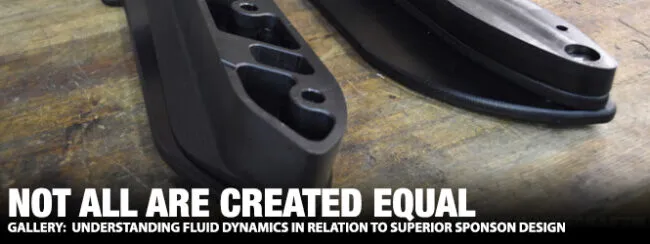
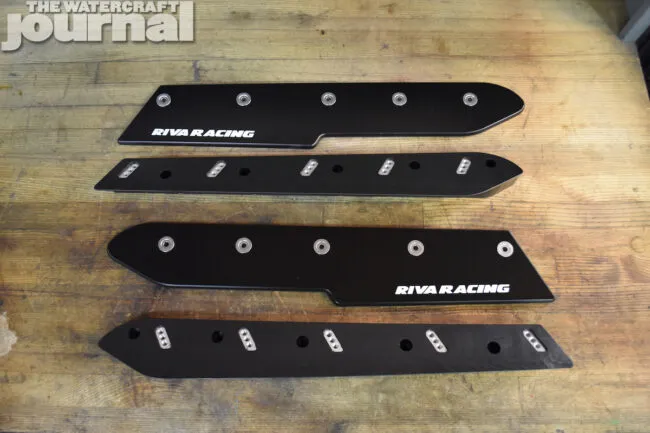
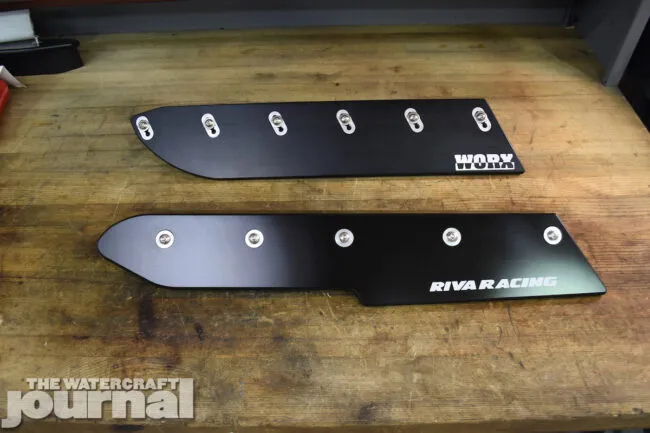
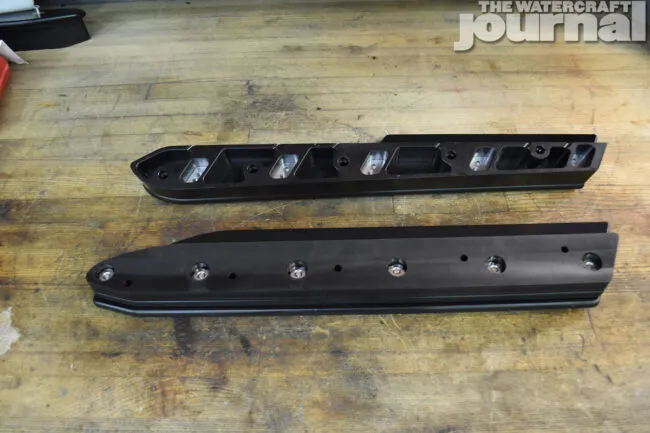
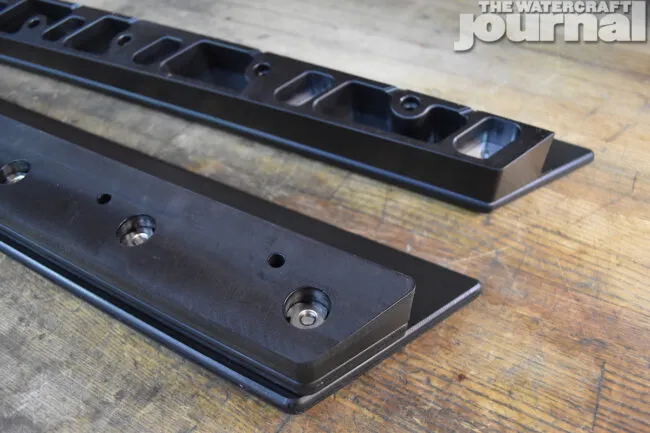
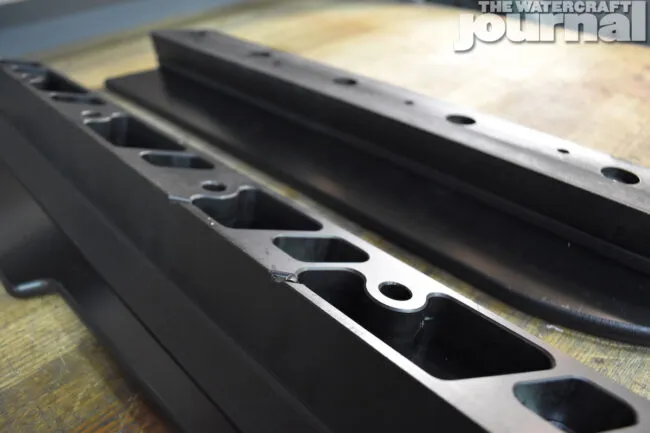
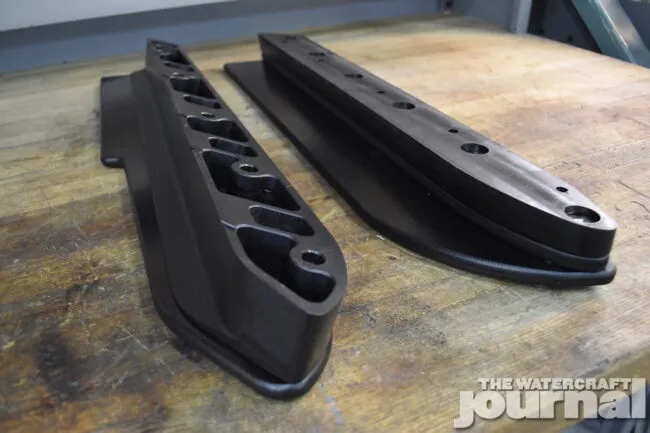
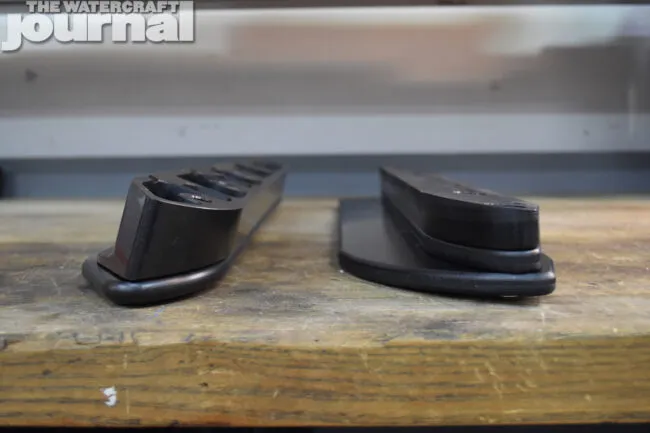
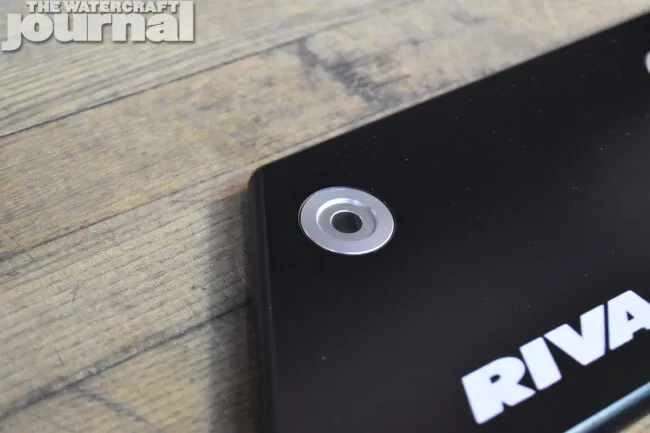
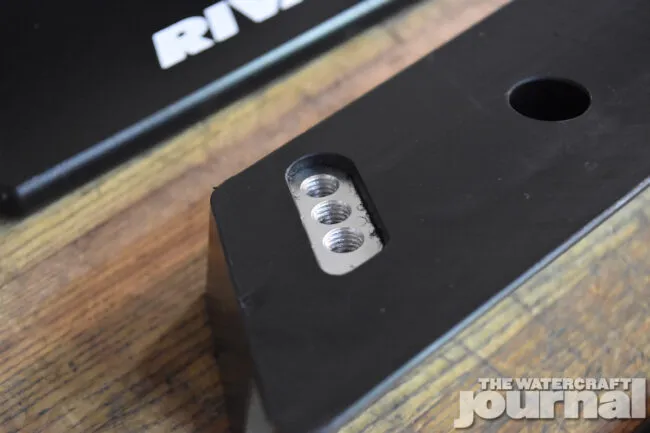

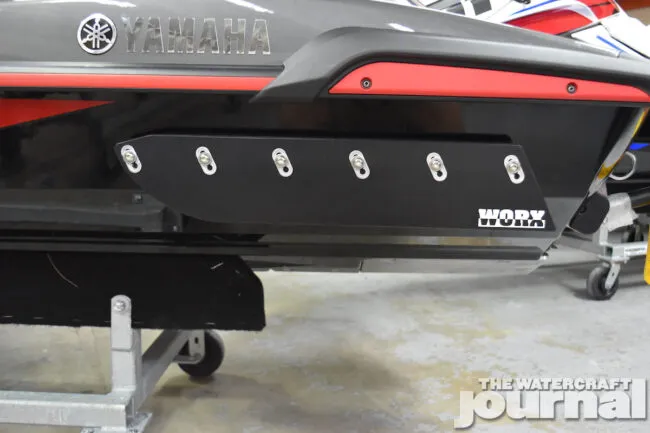
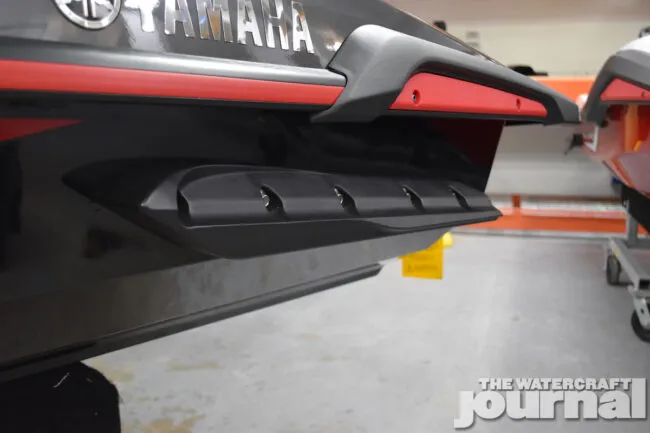
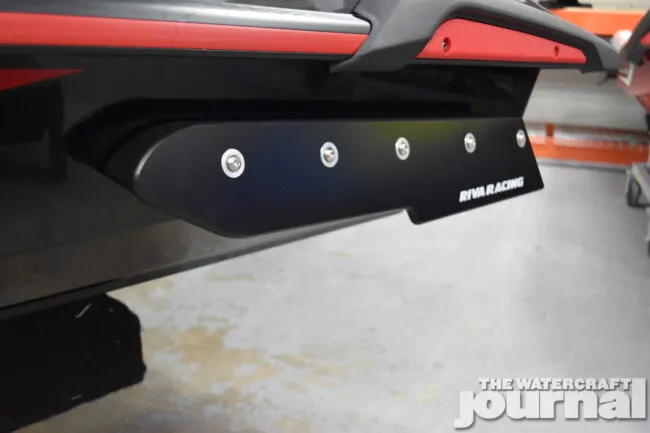
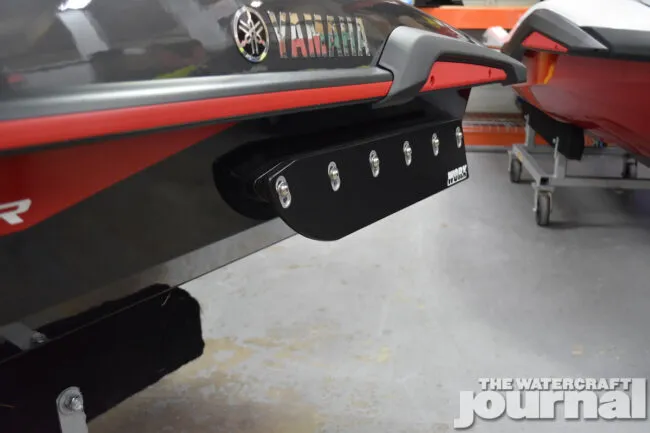
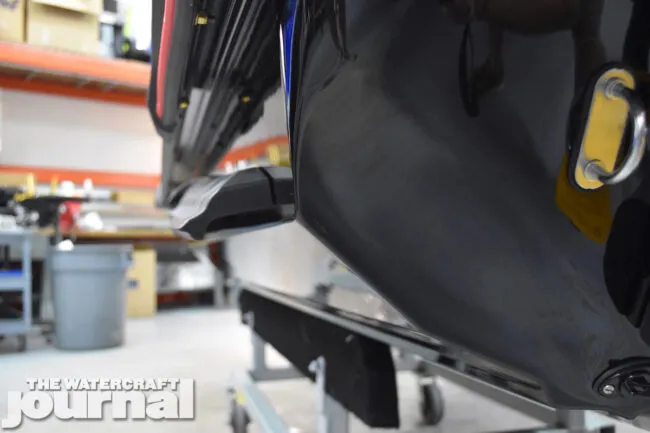
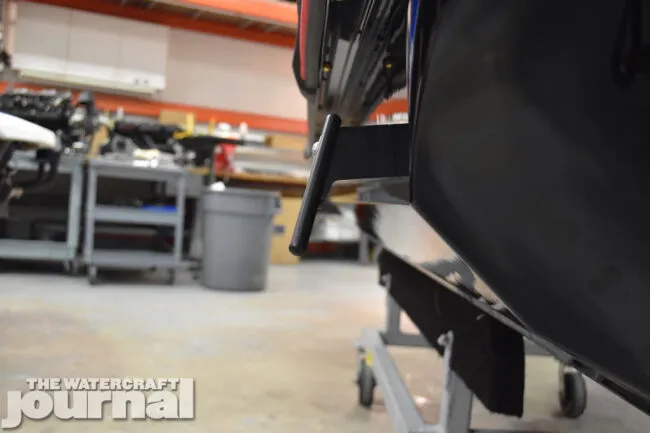
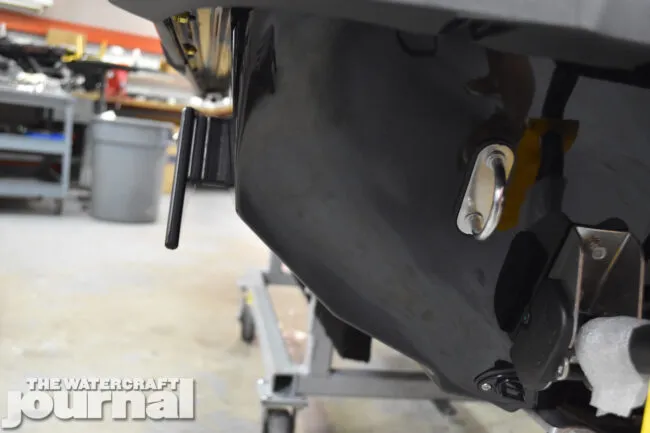
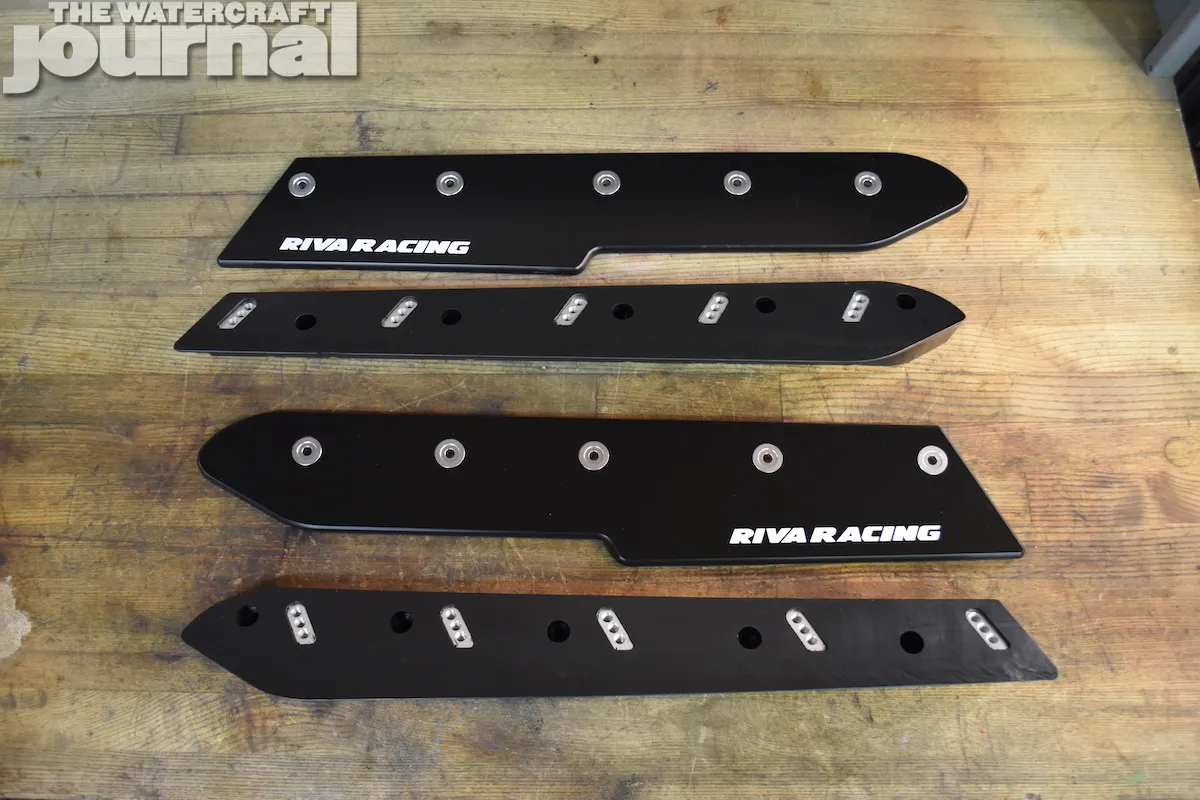
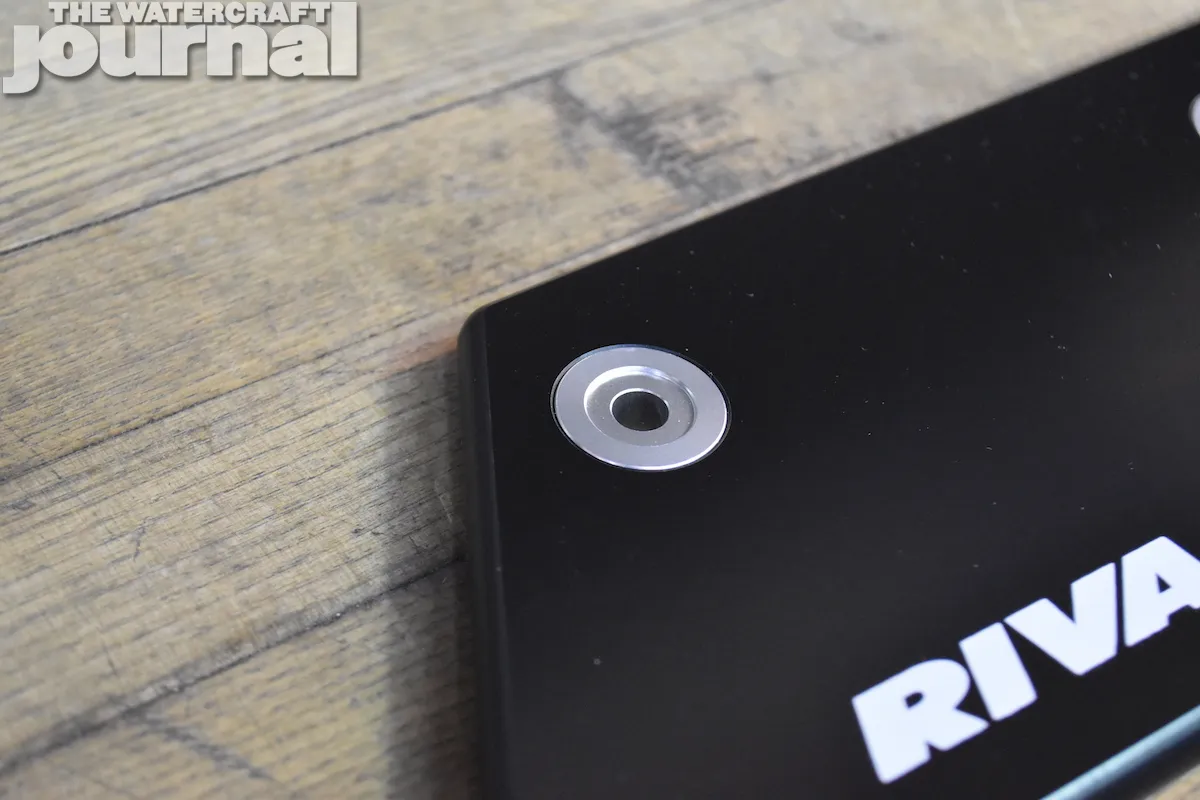
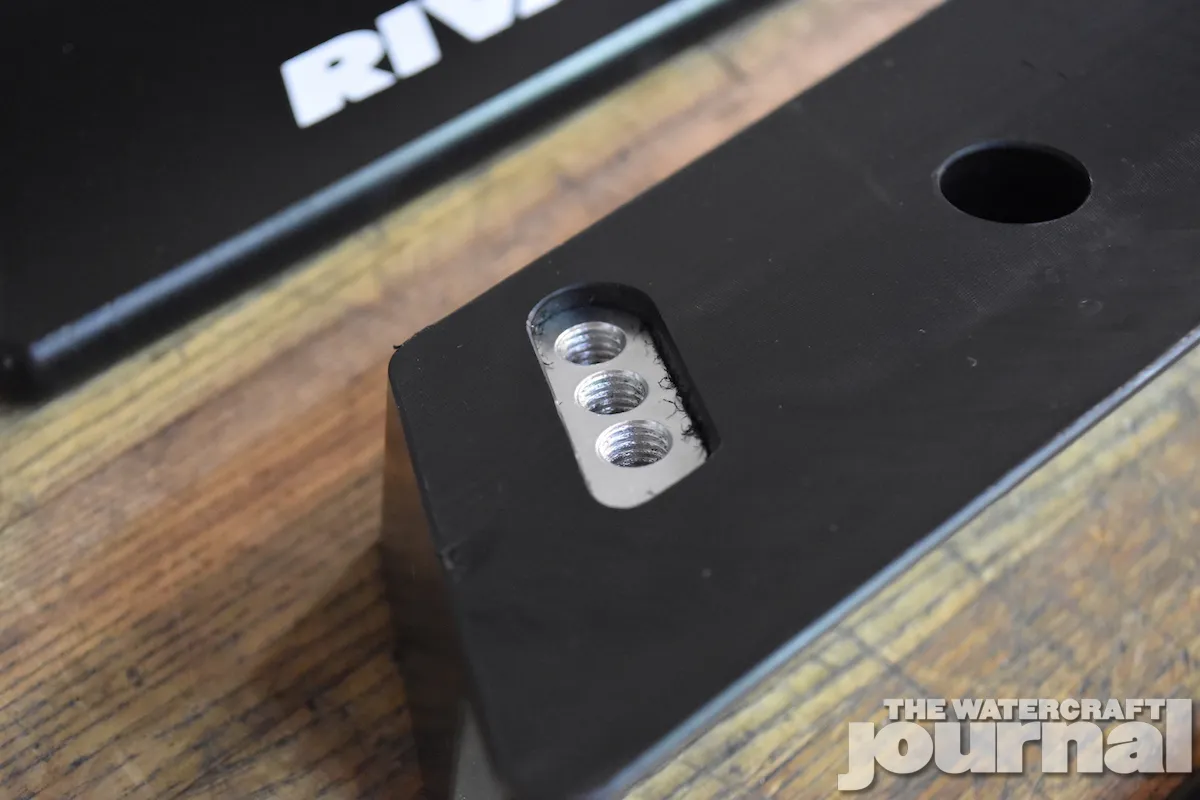
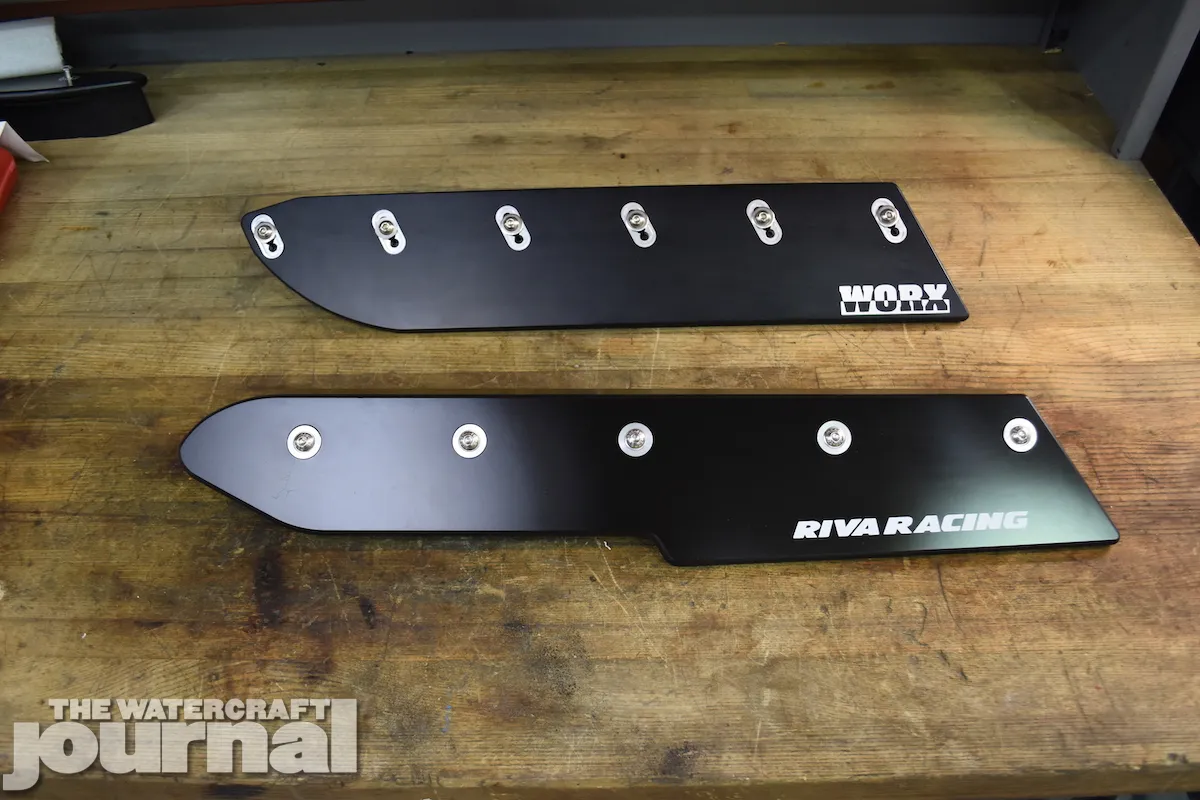
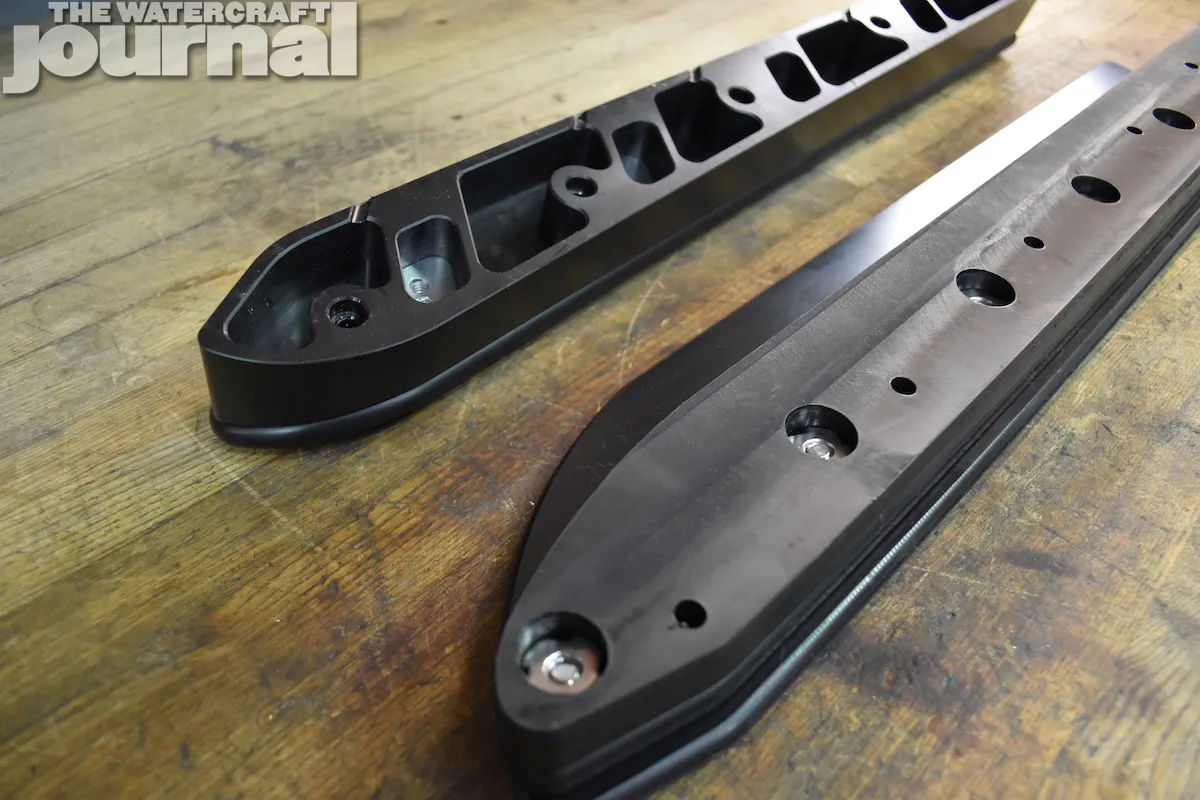
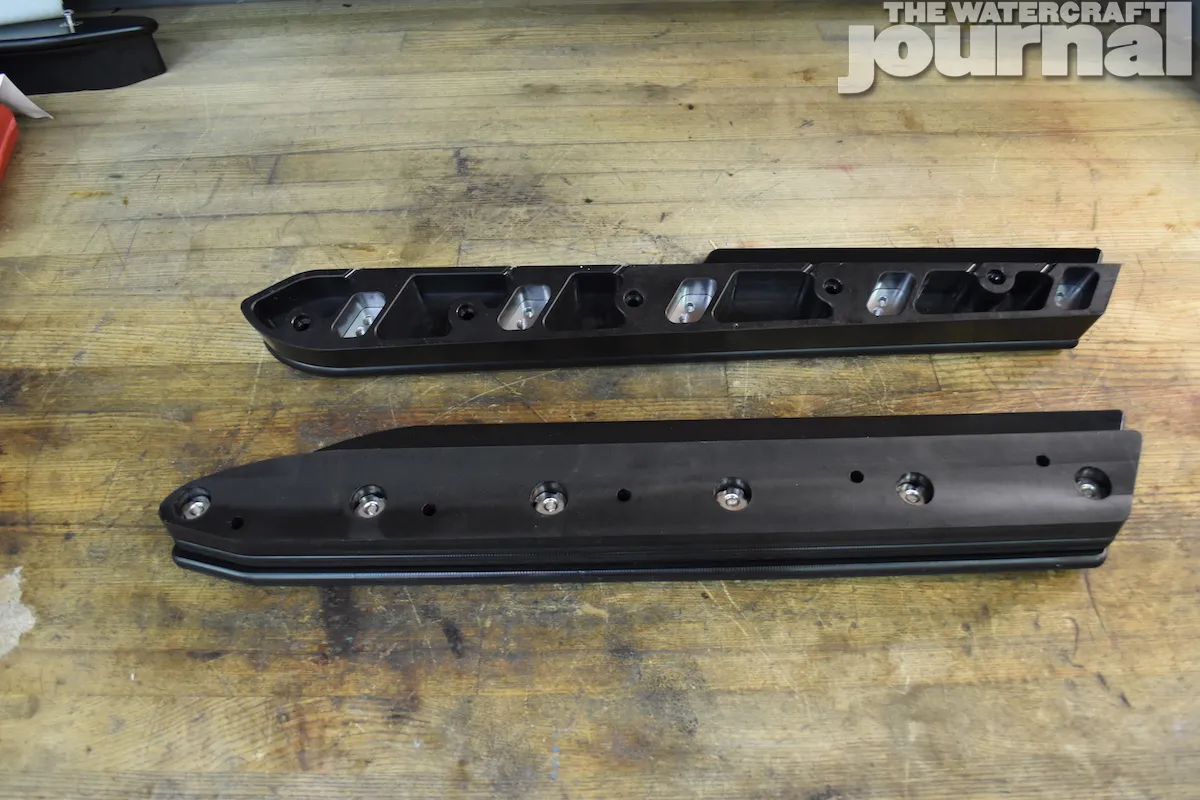
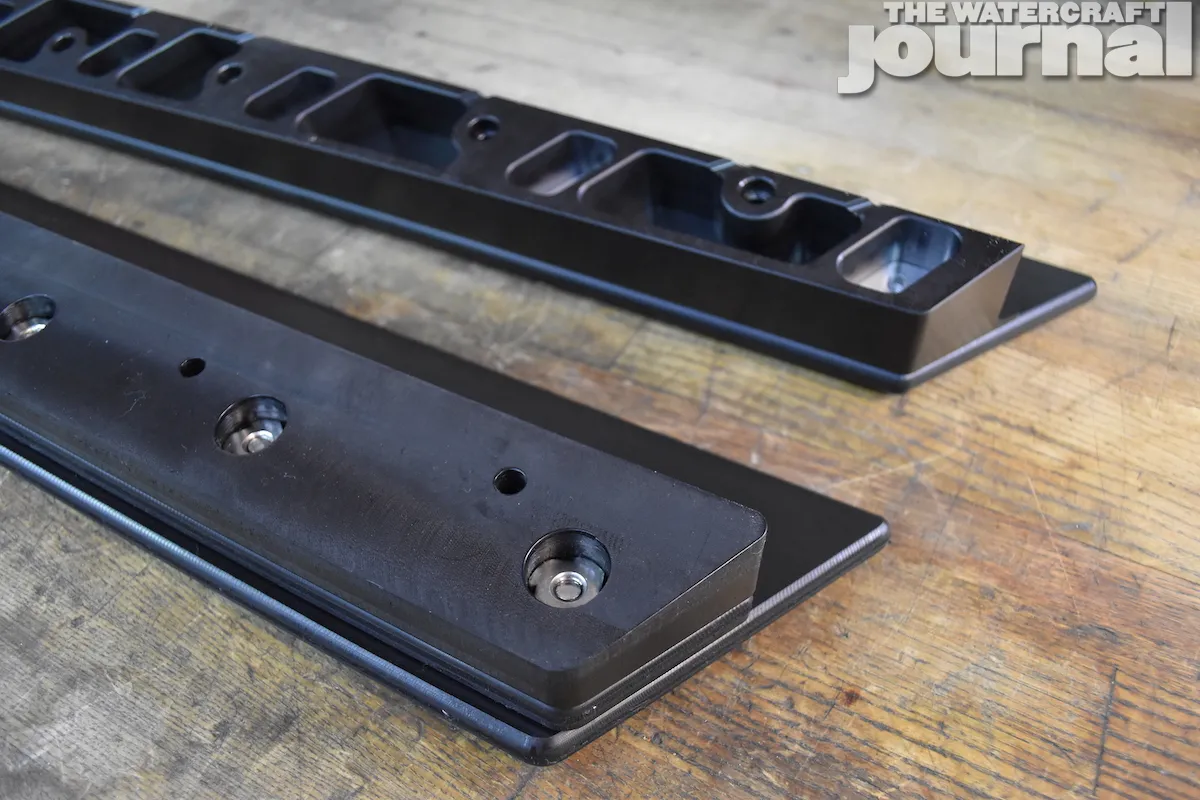
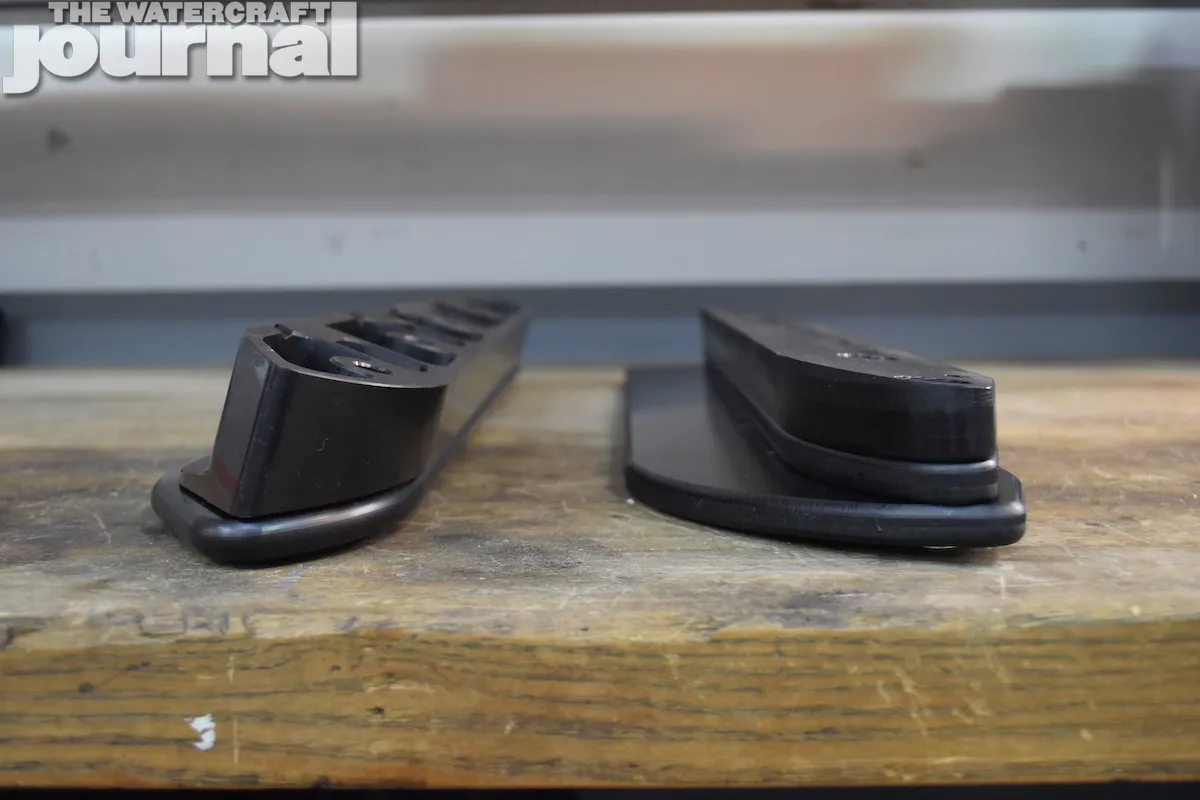
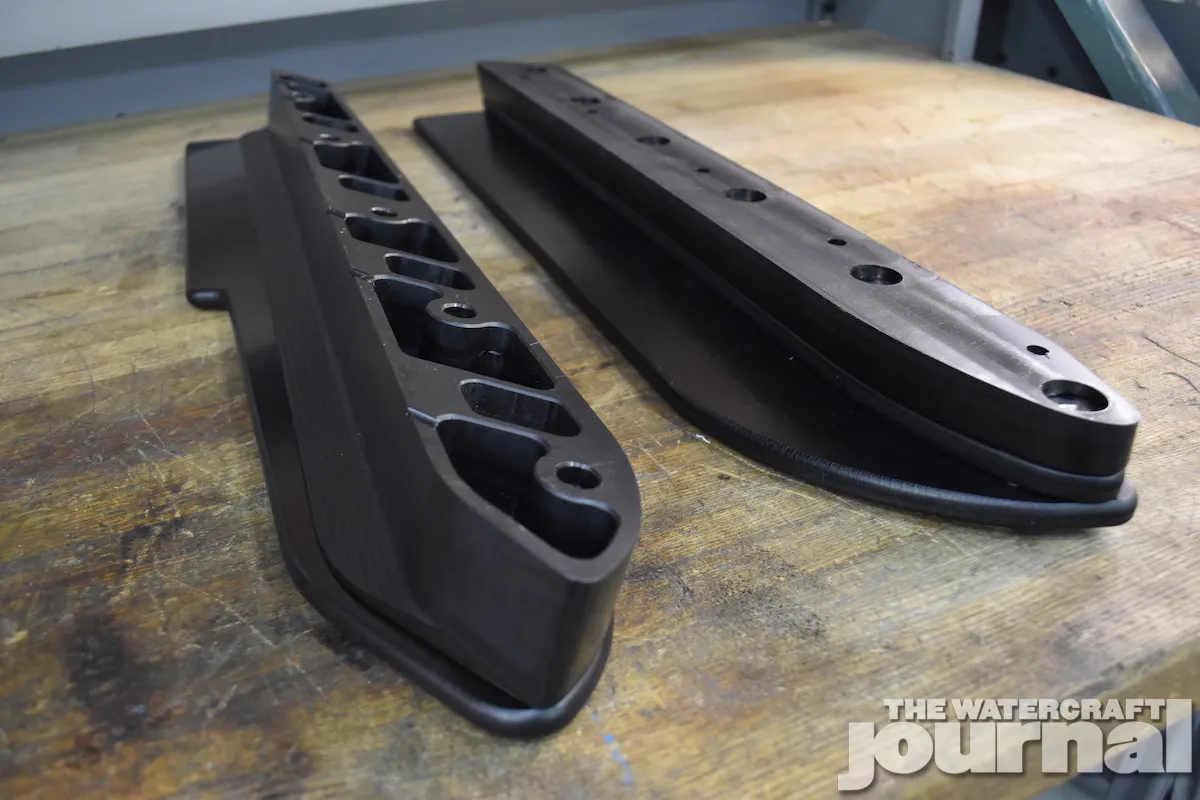
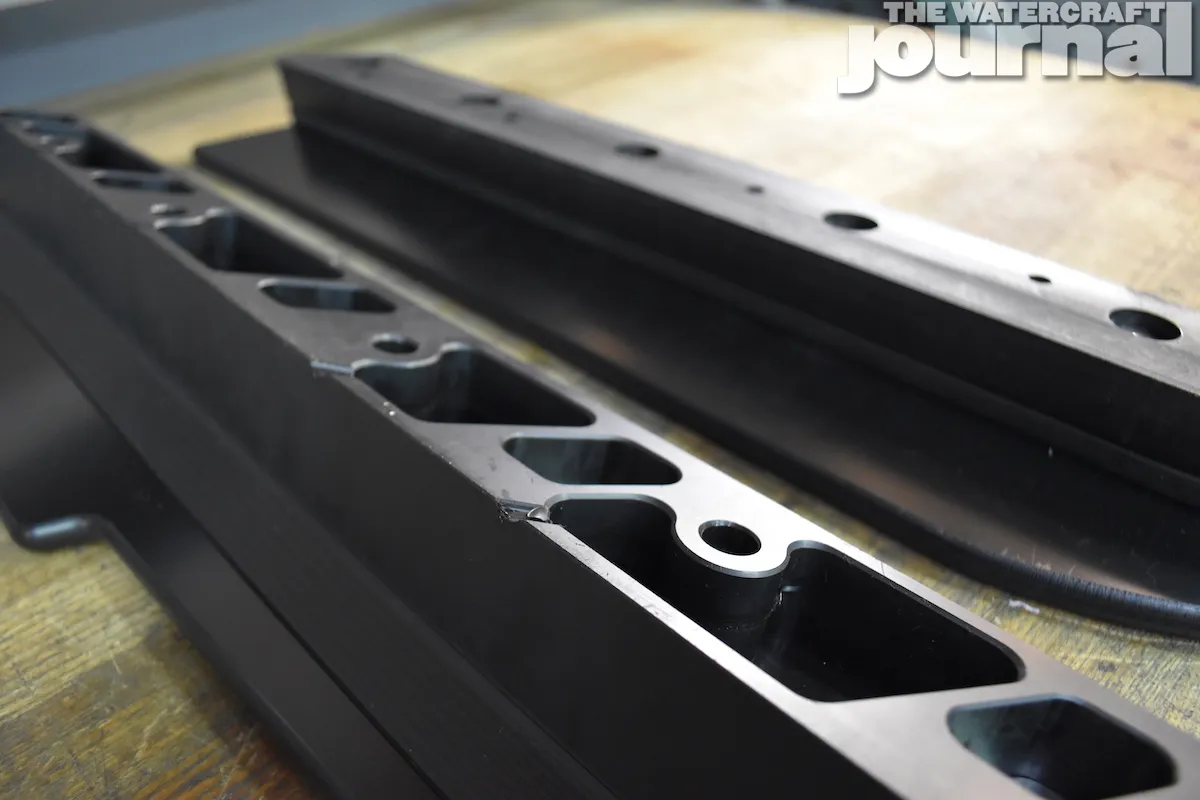
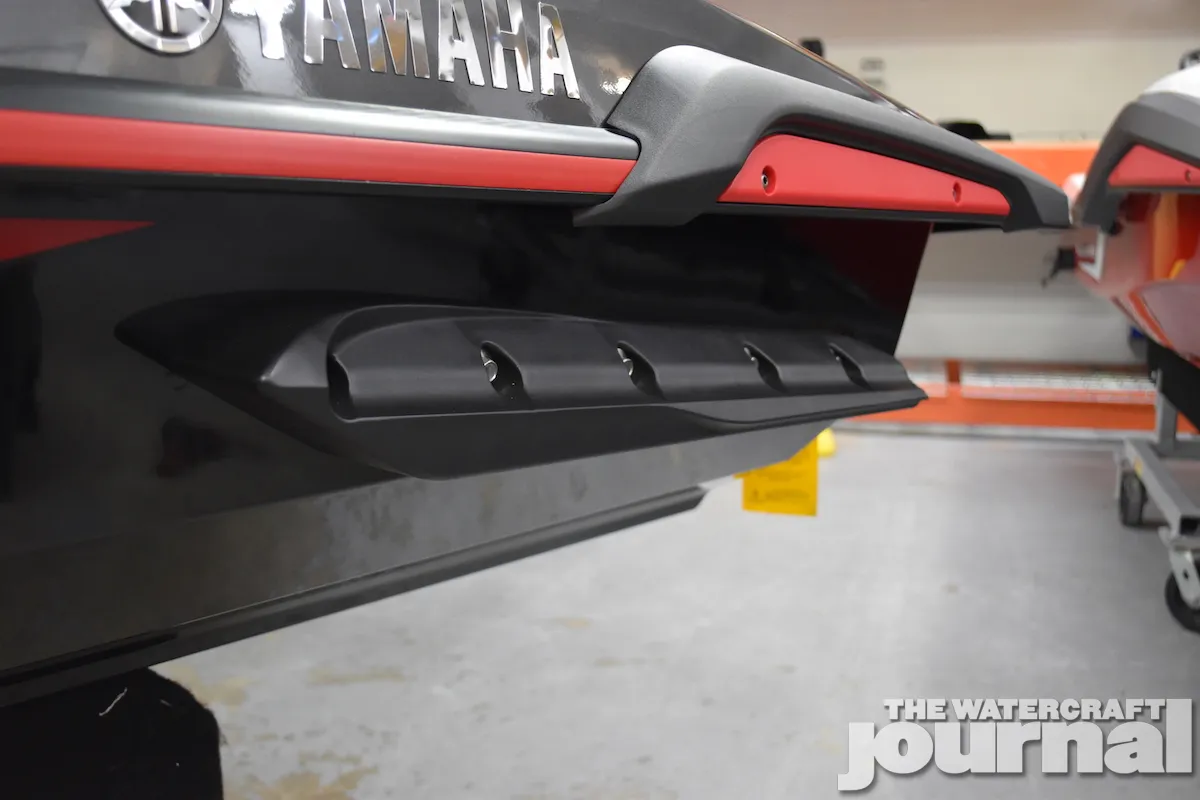
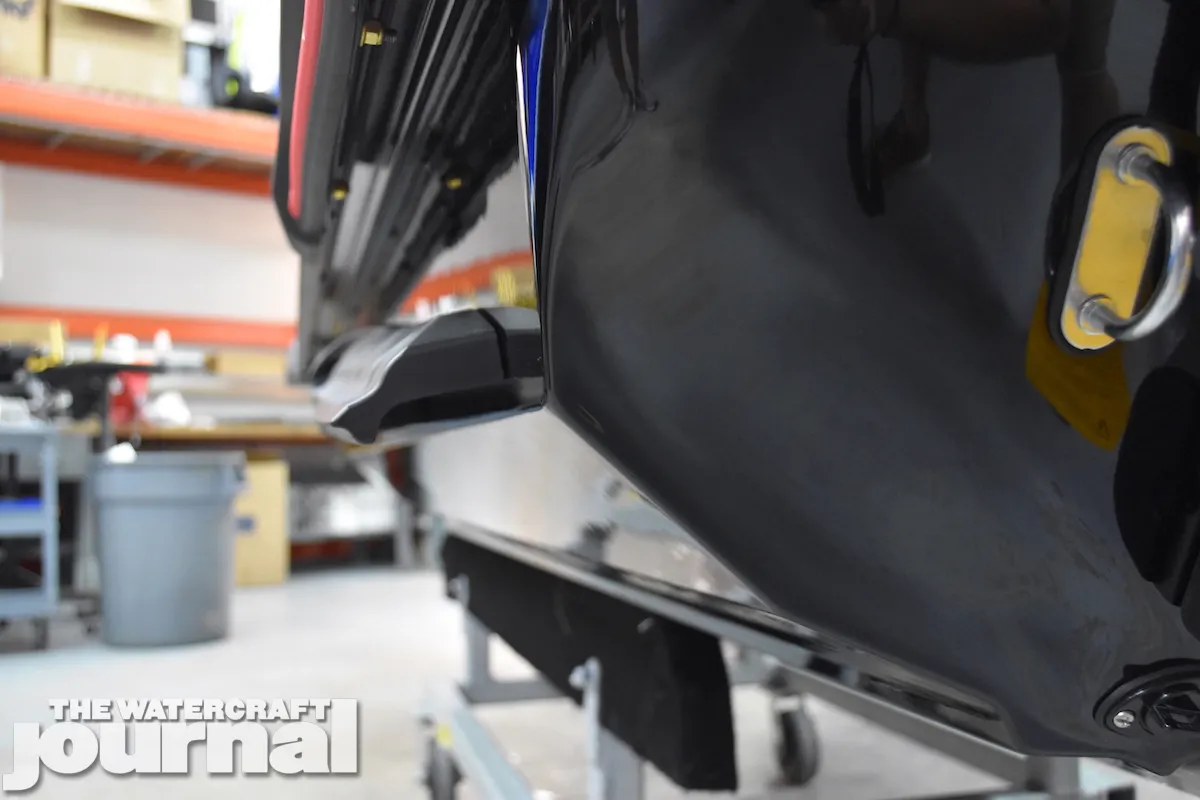
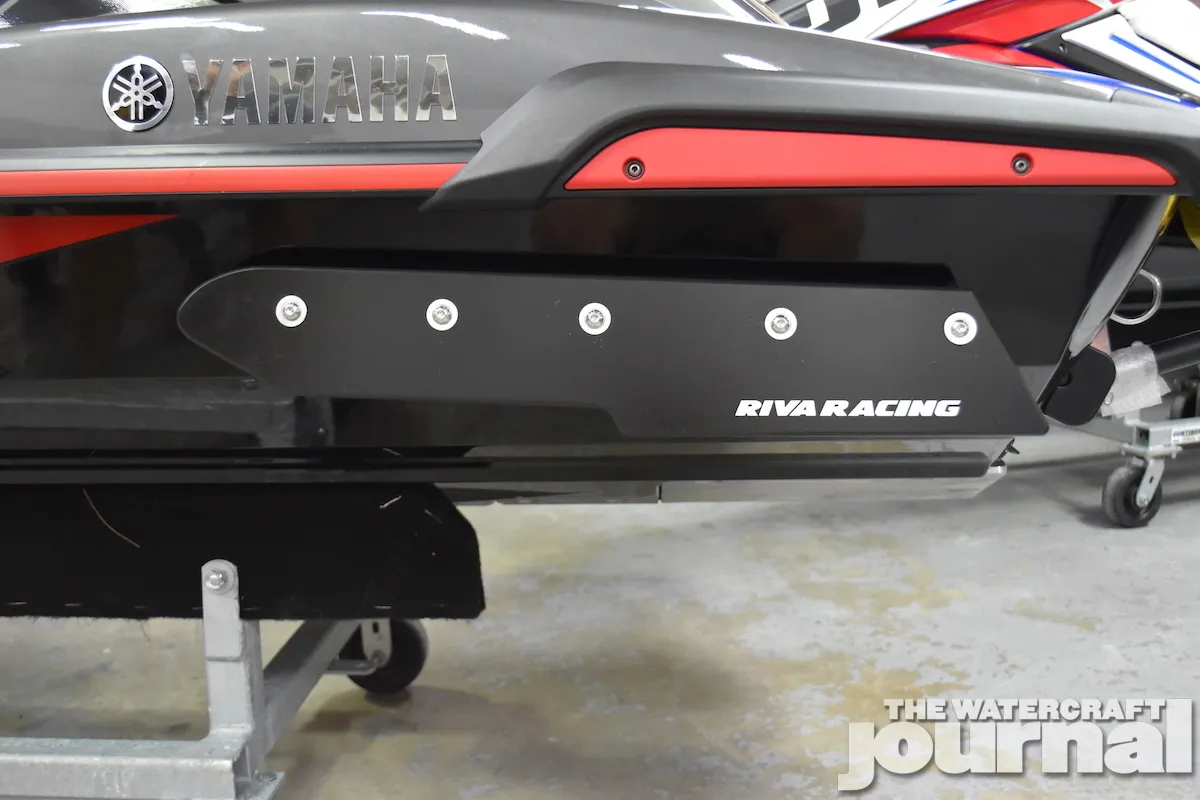
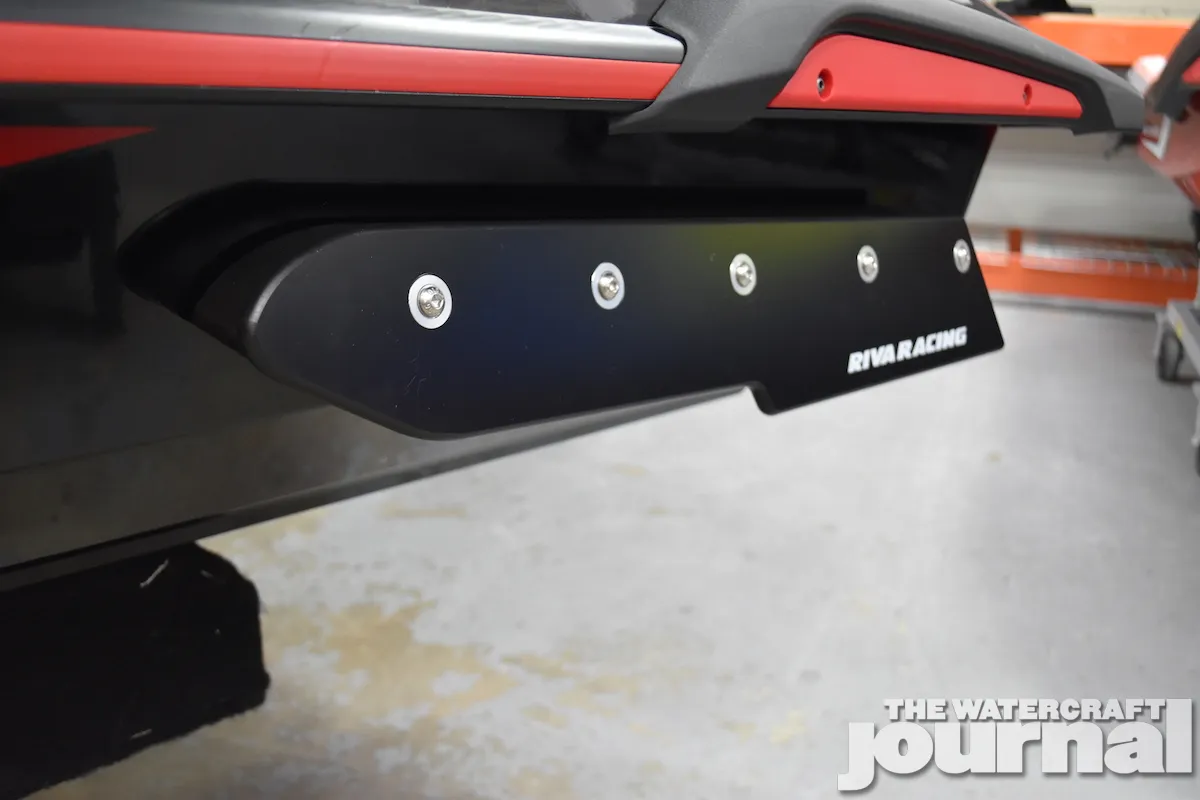
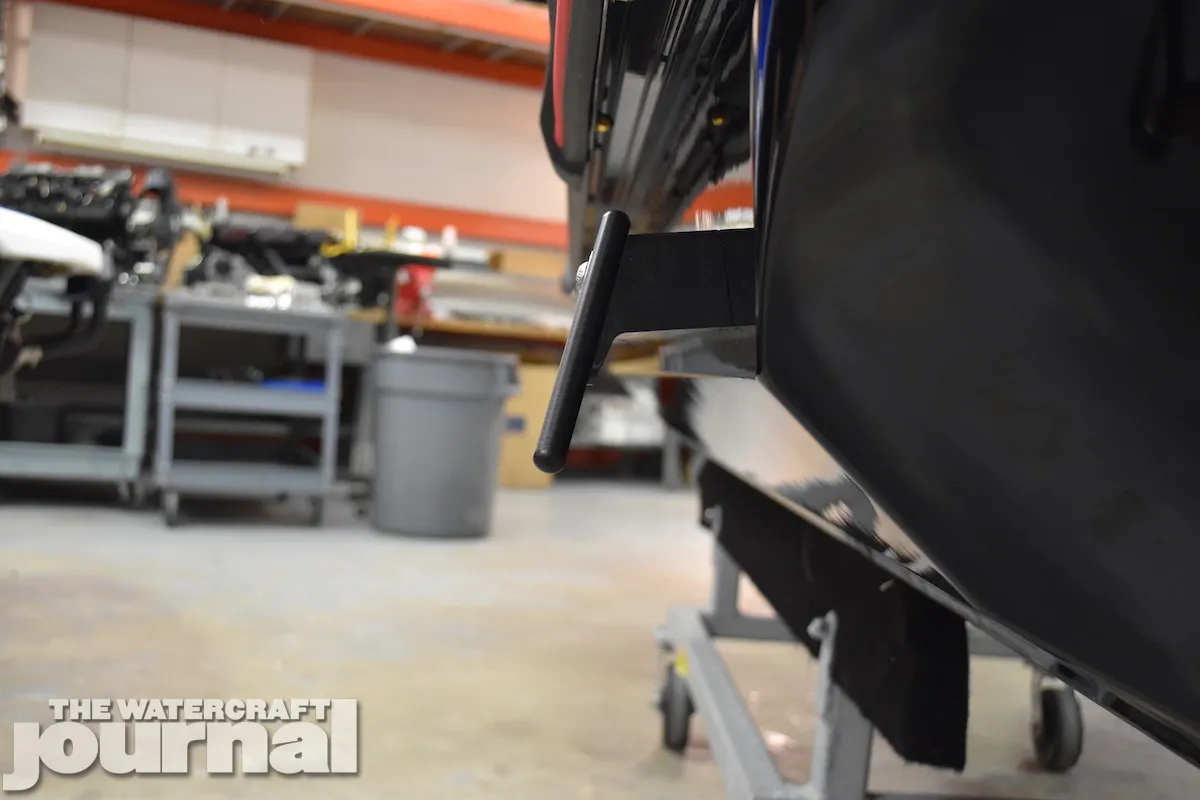
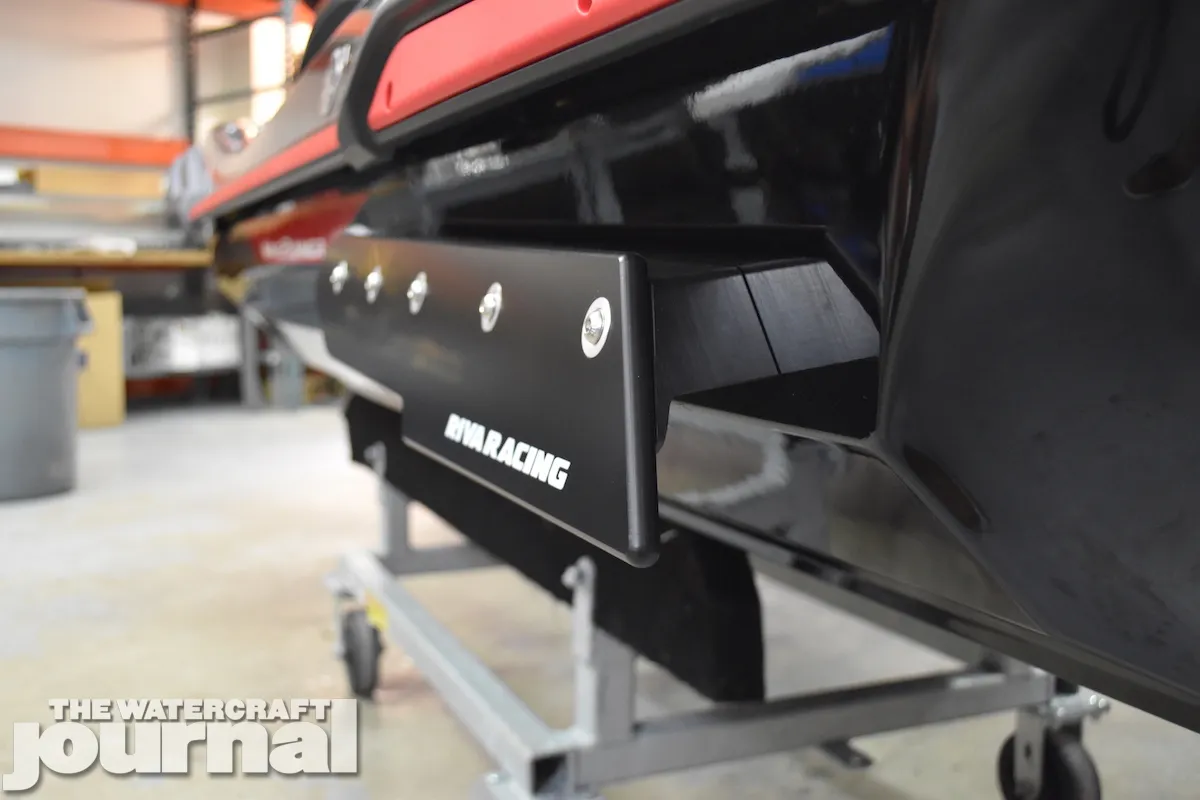
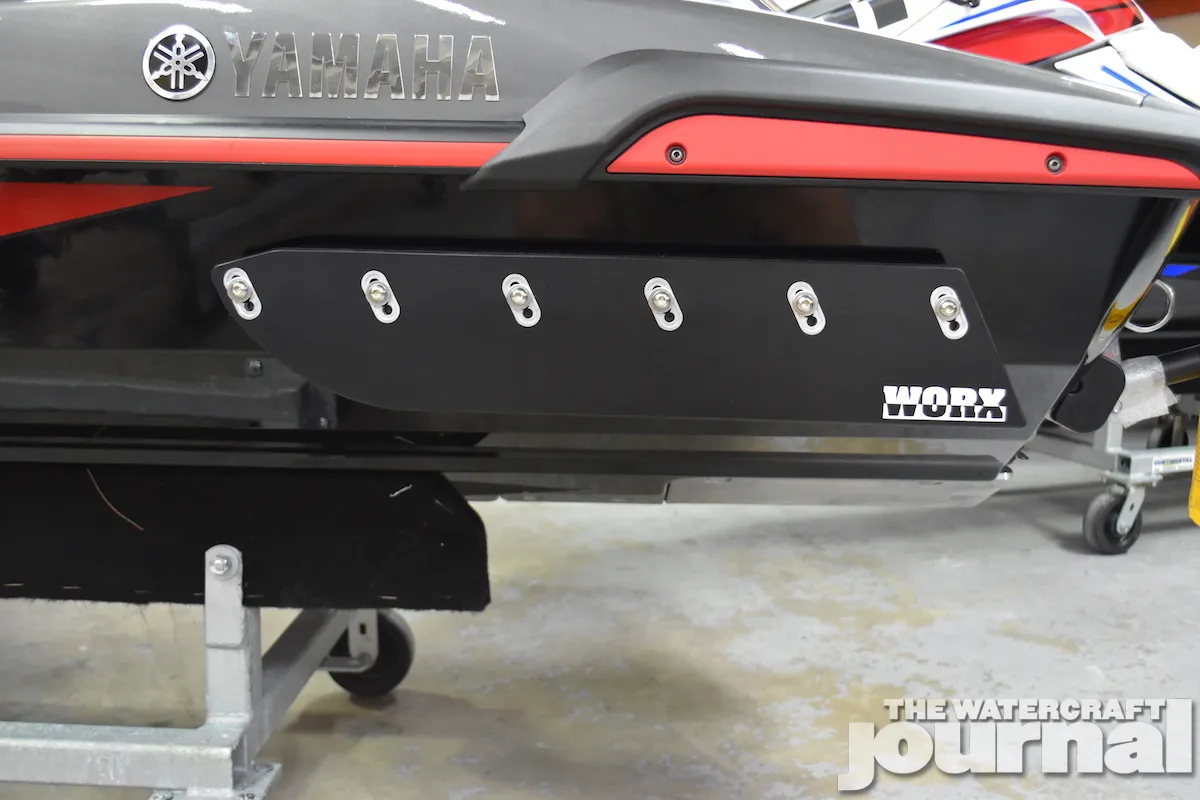
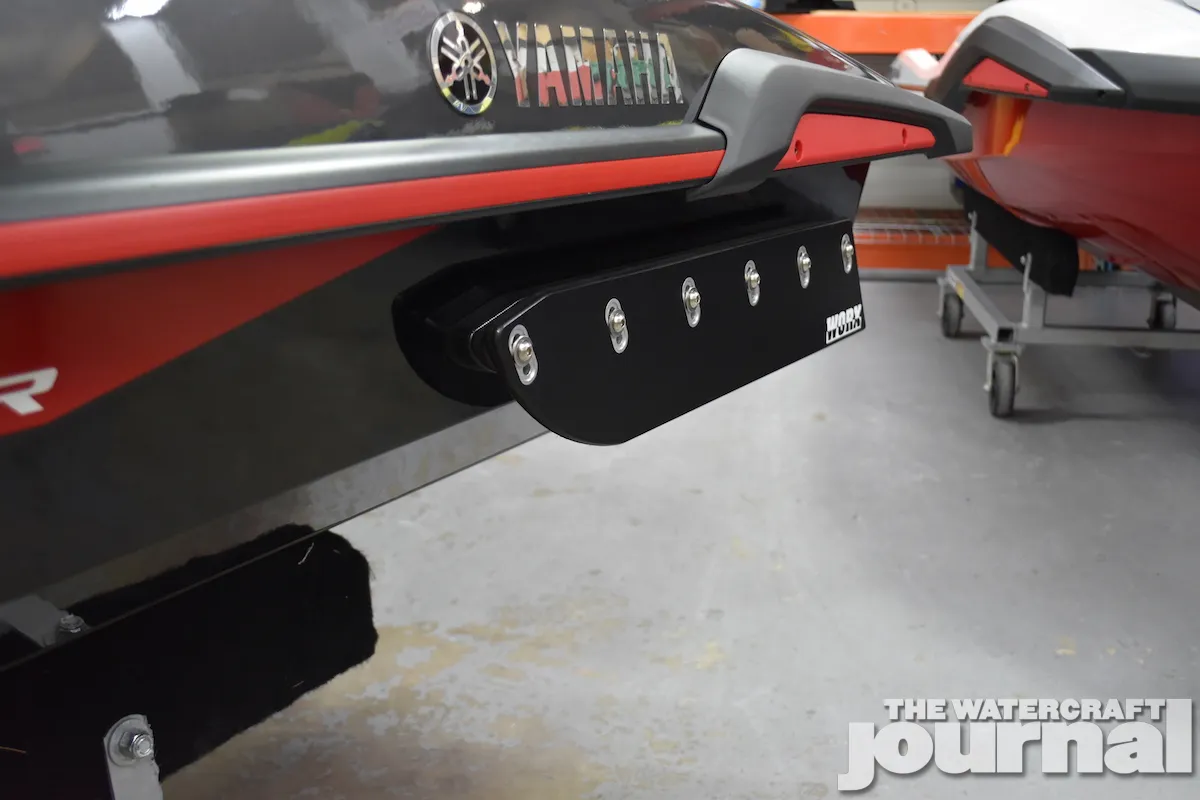
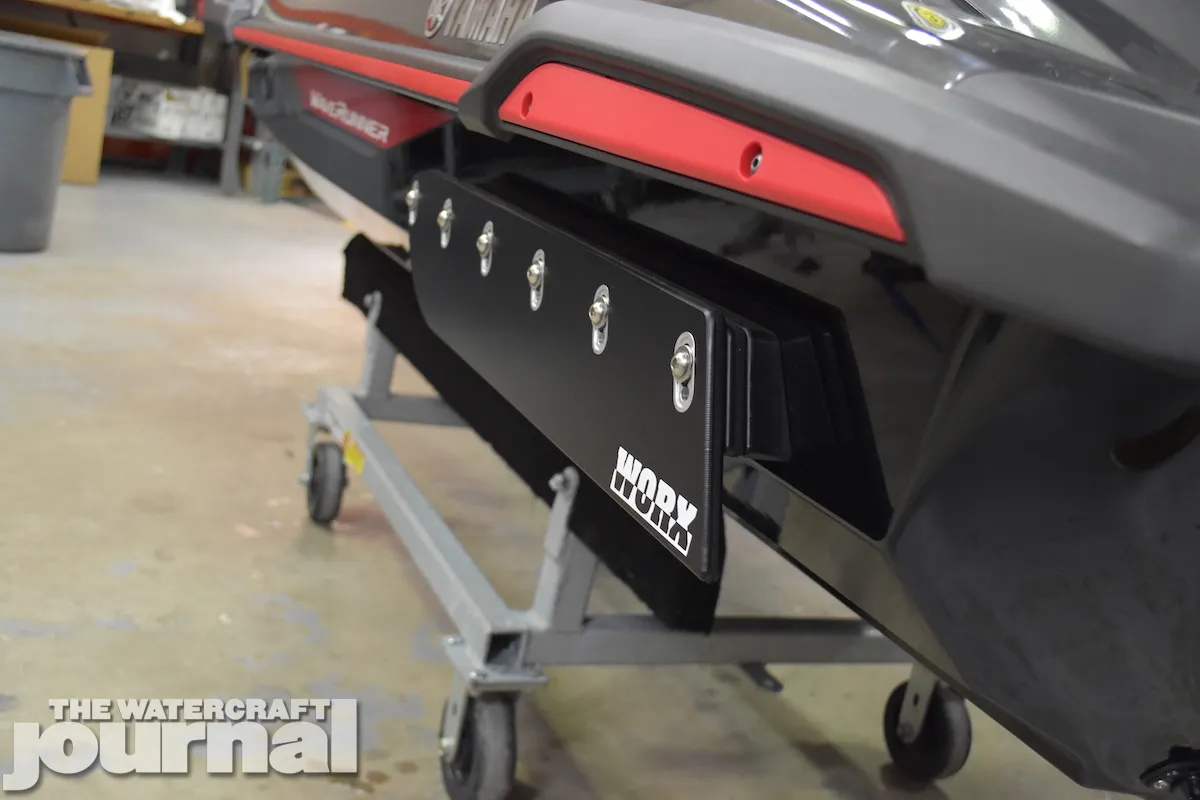
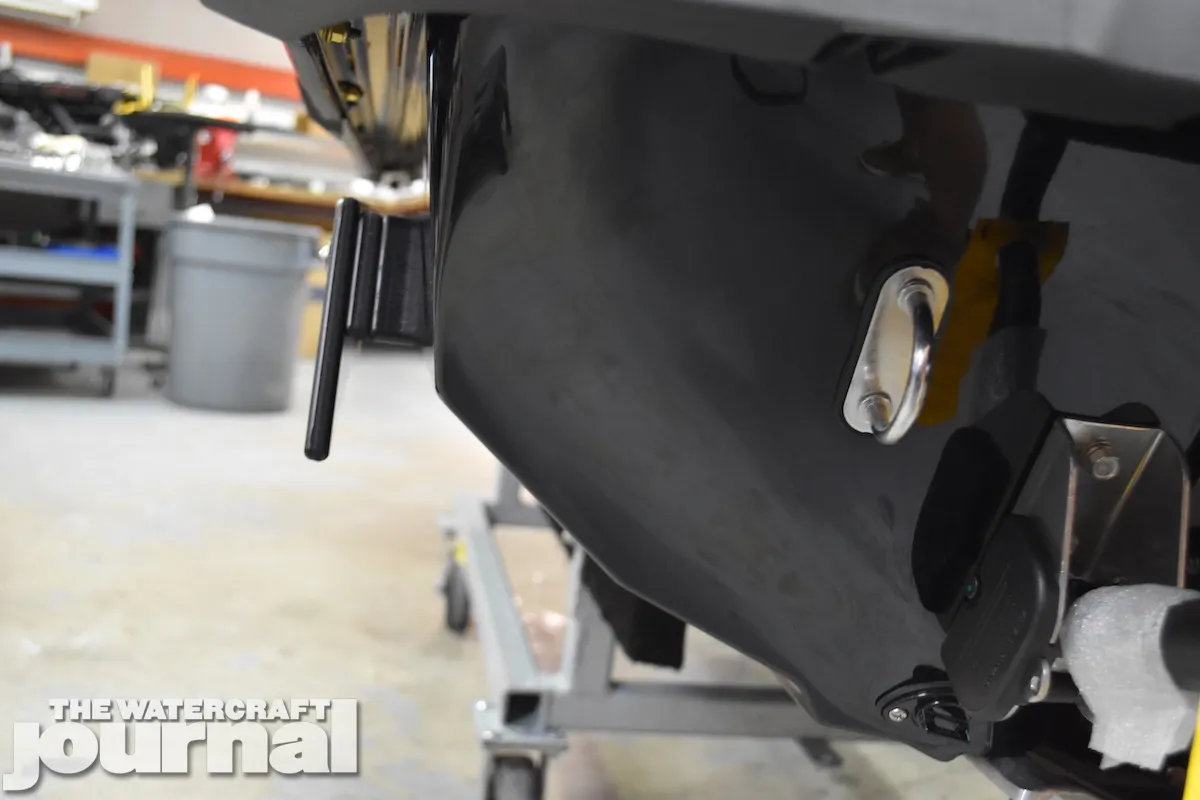


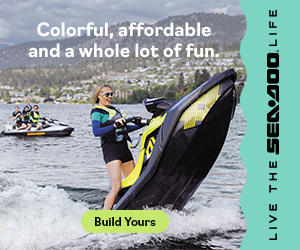
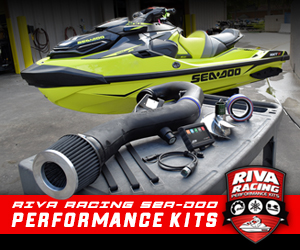
Thanks for the detailed sponsons technical guide. No one write things as professional as you especially in within the Jetski community. I am about to install the RIVA sponsons for my new 2020 RXT-X 300. Now I understand more about how the designs would affect the handling rather than just getting the “feel”. Thank you!